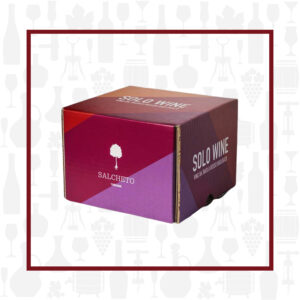Cellar Profile
Established in 1984, Salcheto is the creation of viticulturist and winemaker, Michele Manelli. Michele’s genuine passion for refined and delicate wines has propelled this tiny estate into one of Montepulciano’s top producers. His mission is simple and clear: seek quality, both in the vineyard and the cellar, with an unfailing respect for the character of the grapes. Manual collections, sulfite-free vinifications, native yeasts, “Tuscan Governo” method and large botte and tonneaux barrels are the tools used to produce wines that are elegant and soft, with pronounced aromas and uniqueness for each vintage released. Though lesser known than Chianti Classico and Brunello di Montalcino, Vino Nobile offers incredible value and an earlier drinking window for Tuscan wine lovers. Geographically situated between its more famous neighbours, Vino Nobile’s style takes the best from each—bright and supple, concentrated and powerful. Salcheto is an ‘off the grid’ winery operating one of the wine world’s only energy-independent cellar systems. Along with countless other environmental initiatives, this led to Salcheto being named Gambero Rosso’s Sustainable Winery of the Year in 2014. Their 50 hectares of organically- and biodynamically-farmed vines are planted with Prugnolo Gentile (Sangiovese), Canaiolo, Mammolo, Colorino, Merlot and Trebbiano. Their ‘Obvius’ lineup offers a clean, modern style of natural wines made from, as Michele puts it, ‘grapes only’.
Region
Tuscany (Toscana in Italian) is long renowned as one of the world’s preeminent sites for quality wines. It is home to the Chianti, Brunello di Montalcino, Bolghero, Maremma and Vino Nobile di Montepulciano regions, as well as many others, which are enjoyed by wine lovers around the globe. This is a breathtaking landscape of rolling hills; almost 3/4 of the Province’s land is hilly. The Tyrrhenian Sea lies just to the west, providing cooling breezes and moderate winters. The hills and altitude (between 600 and 1500 ft.) allow grapes to retain freshness and acidity during the hot summers. The soils vary from sandstone, limestone and marl near the Appenines, to gravel and clay near the coastal regions of Bolgheri and Maremma and to the sandy, mineral rich clay of Vino Nobile. The most planted and most well known varietal of Tuscany is Sangiovese, but there are other indigenous grapes such as Colorino, Mammolo and Canaiolo well planted. International varieties like Cabernet Sauvignon, Merlot and Chardonnay have been gaining popularity and vineyard space, led by the iconic Super Tuscans that have huge scores and price tags to match.
Vineyard
Produced with grapes from some of the youngest estate vineyards, plantings in Chianti and some of Salcheto’s older, more prestigious fruit. The vineyards are farmed biodynamically, with a keen eye towards the environment. The sandy, clay rich soil is perfect for highlighting the intense aromatics of Sangiovese.
Varieties
Sangiovese, a dark-berried vine, is the most widely-planted grape variety in Italy. Virtually synonymous with the red wines of Tuscany and all the romanticism that goes with the territory, Sangiovese is the core constituent in some of the great names in Italian wine. It is prized for its high acid, firm tannins and balanced nature. Savoury flavours of dark cherries and black stone fruit are characteristic and may be backed by secondary notes of tomato leaf and dried herbs. The use of oak has become more popular and this coaxes richer flavours from the grapes, tending toward plum and wild raspberry. The practice of blending white grapes into red wines — to soften tannins and add acidity and aromatics — has been a common practice for centuries in Tuscany. For Chianti, 10% of Malvasia or Trebbiano can be added to Sangiovese under current DOCG rules.
Winemaking
Hand-harvested fruit is destemmed and sorted before being gently crushed and fermented in temperature-controlled stainless steel using indigenous yeasts. After fermentation, 30% of the wine is transferred to wood, with the remainder in stainless steel, to age for a year. The wine is then put into an eco-friendly bag-in-box, leaving 49% less of a carbon footprint, and ensuring your last glass is as fresh as your first.
Tasting Notes
Red cherry, pomegranate, violets and sandalwood on the nose. The palate is far more structured than one would expect from a box of wine! Noticeable, but supple tannins form a solid backbone, while the vibrant acidity tingles. Flavours of raspberry, sour cherry, a touch of bramble, vanilla and a hint of a savoury element lead to a long, vanilla inflected finish. Try this with a warming winter root vegetable stew, cassoulet or a greasy burger.

 info@buyersandcellars.ca
www.buyersandcellars.ca
info@buyersandcellars.ca
www.buyersandcellars.ca